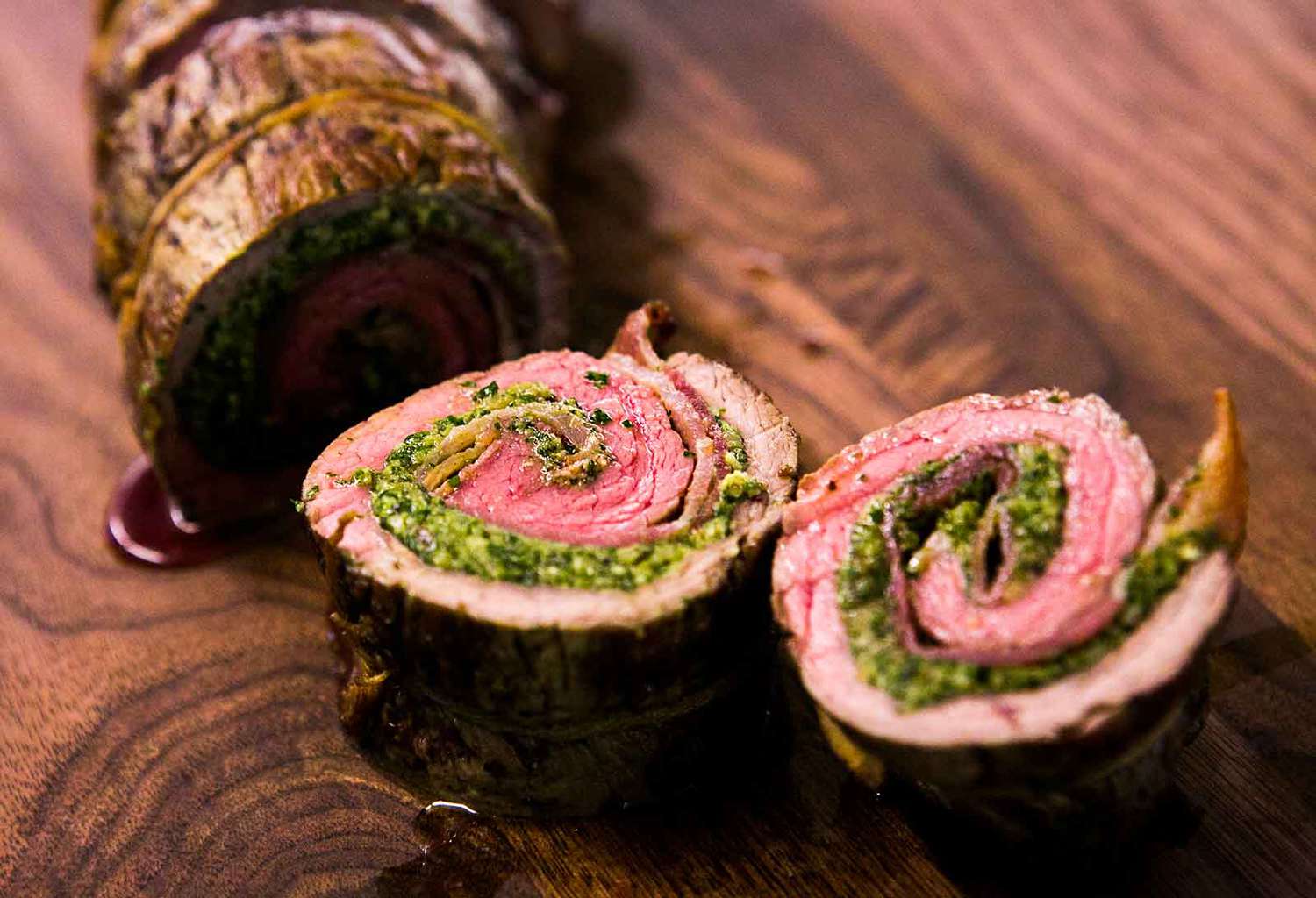
What is a roulade? A roulade is a dish made by rolling a filling inside a flat piece of meat, pastry, or sponge cake. This culinary delight can be savory or sweet, depending on the ingredients used. Savory roulades often feature meats like beef, chicken, or pork, filled with vegetables, cheese, or other meats. Sweet roulades, on the other hand, typically involve sponge cake rolled around fillings such as whipped cream, fruit, or chocolate. Originating from the French word "rouler," meaning "to roll," roulades are popular in various cuisines worldwide. Whether served as a main course or dessert, they offer a visually appealing and flavorful experience.
What is a Roulade?
A roulade is a dish made by rolling a flat piece of meat, pastry, or cake around a filling. This versatile culinary creation can be savory or sweet, making it a favorite in many kitchens around the world. Here are some fascinating facts about roulades.
-
The term "roulade" comes from the French word "rouler," which means "to roll."
-
Roulades can be made from various ingredients, including meat, fish, vegetables, and even desserts like sponge cake.
-
Savory roulades often feature fillings like spinach, cheese, mushrooms, or ham.
-
Sweet roulades typically have fillings such as whipped cream, fruit preserves, or chocolate.
-
The Swiss roll is a popular type of sweet roulade, known for its spiral shape and creamy filling.
History of Roulades
Roulades have a rich history that spans several cultures and centuries. This dish has evolved over time, adapting to local ingredients and tastes.
-
Roulades date back to the 17th century in Europe, where they were initially made with meat.
-
The Swiss roll, a type of sweet roulade, was first mentioned in a recipe book in 1852.
-
In Germany, a popular version called "Rinderroulade" is made with thinly sliced beef, mustard, bacon, onions, and pickles.
-
In Italy, "braciole" is a type of roulade made with thin slices of meat, often beef or pork, rolled around a filling of cheese, herbs, and breadcrumbs.
-
The French have their own version called "paupiette," which is typically made with thin slices of veal or fish.
Making a Roulade
Creating a roulade can be an art form, requiring skill and precision. Here are some interesting facts about the process of making roulades.
-
To make a roulade, the base ingredient must be pounded thin to ensure it rolls easily.
-
The filling should be spread evenly to avoid lumps and ensure a uniform roll.
-
Rolling the roulade tightly is crucial to prevent the filling from spilling out during cooking.
-
Many roulades are tied with kitchen twine or secured with toothpicks to hold their shape.
-
Baking, roasting, or steaming are common methods for cooking roulades.
Popular Roulade Variations
Roulades come in many forms, each with its unique twist. Here are some popular variations from around the globe.
-
The Hungarian "Hortobágyi palacsinta" is a savory pancake roulade filled with meat and topped with a paprika sauce.
-
In Japan, "tamago maki" is a type of sushi roulade made with a thin omelet wrapped around rice and fillings.
-
The British "Beef Wellington" is a luxurious roulade made with beef tenderloin, mushrooms, and puff pastry.
-
In the Middle East, "makloubeh" is a roulade made with eggplant, rice, and meat, often served as a layered dish.
-
The Polish "zrazy" is a roulade made with beef, bacon, and pickles, often served with a rich gravy.
Fun Facts about Roulades
Roulades are not just delicious; they also have some fun and quirky aspects. Here are a few more interesting tidbits.
-
Roulades can be served hot or cold, making them versatile for different occasions.
-
The spiral shape of a roulade makes it visually appealing, often stealing the show at dinner parties.
-
Some roulades are made with a combination of sweet and savory ingredients, creating a unique flavor profile.
-
Roulades can be made ahead of time and stored in the refrigerator or freezer, making them convenient for meal prep.
-
The technique of rolling food is not limited to roulades; it is also used in dishes like sushi, burritos, and spring rolls.
-
Roulades can be adapted to fit various dietary preferences, including vegetarian, vegan, and gluten-free options.
-
The presentation of a roulade can be elevated by slicing it into rounds, revealing the beautiful spiral pattern inside.
-
Roulades are often featured in cooking competitions and culinary shows, showcasing the skill and creativity of chefs.
Roulade: A Sweet and Savory Delight
Roulades, with their rich history and versatile nature, have captured the hearts of food lovers worldwide. Whether sweet or savory, these rolled delights offer endless possibilities for creativity in the kitchen. From the classic Swiss roll to the hearty beef roulade, each variation brings something unique to the table.
Experimenting with different fillings and flavors can turn a simple roulade into a culinary masterpiece. Perfect for any occasion, they can be a showstopper at dinner parties or a comforting treat on a cozy night in.
Understanding the basics of making a roulade opens up a world of delicious opportunities. So, next time you're in the mood to impress or just craving something special, give roulades a try. You'll find that this delightful dish is more than just a roll—it's a celebration of flavor and tradition.
Was this page helpful?
Our commitment to delivering trustworthy and engaging content is at the heart of what we do. Each fact on our site is contributed by real users like you, bringing a wealth of diverse insights and information. To ensure the highest standards of accuracy and reliability, our dedicated editors meticulously review each submission. This process guarantees that the facts we share are not only fascinating but also credible. Trust in our commitment to quality and authenticity as you explore and learn with us.
